Hyundai Santa Fe vs Mercedes GLC - Differences and prices compared
Costs and Efficiency:
When it comes to price and running costs, the biggest differences usually appear. This is often where you see which car fits your budget better in the long run.
Mercedes GLC has a slight advantage in terms of price – it starts at 50300 £, while the Hyundai Santa Fe costs 51200 £. That’s a price difference of around 887 £.
Fuel consumption also shows a difference: Mercedes GLC manages with 1.60 L and is therefore minimal more efficient than the Hyundai Santa Fe with 1.70 L. The difference is about 0.10 L per 100 km.
As for range, the Mercedes GLC performs clearly better – achieving up to 714 km, about 660 km more than the Hyundai Santa Fe.
Engine and Performance:
Power, torque and acceleration are the classic benchmarks for car enthusiasts – and here, some clear differences start to show.
When it comes to engine power, the Mercedes GLC has a decisively edge – offering 680 HP compared to 253 HP. That’s roughly 427 HP more horsepower.
In acceleration from 0 to 100 km/h, the Mercedes GLC is decisively quicker – completing the sprint in 3.50 s, while the Hyundai Santa Fe takes 9 s. That’s about 5.50 s faster.
In terms of top speed, the Mercedes GLC performs clearly perceptible better – reaching 275 km/h, while the Hyundai Santa Fe tops out at 196 km/h. The difference is around 79 km/h.
There’s also a difference in torque: Mercedes GLC pulls clearly stronger with 1020 Nm compared to 380 Nm. That’s about 640 Nm difference.
Space and Everyday Use:
Beyond pure performance, interior space and usability matter most in daily life. This is where you see which car is more practical and versatile.
Seats: Hyundai Santa Fe offers distinct more seating capacity – 7 vs 5.
In curb weight, Mercedes GLC is hardly perceptible lighter – 1910 kg compared to 1920 kg. The difference is around 10 kg.
In terms of boot space, the Hyundai Santa Fe offers slightly more room – 711 L compared to 620 L. That’s a difference of about 91 L.
In maximum load capacity, the Hyundai Santa Fe performs to a small extent better – up to 2032 L, which is about 292 L more than the Mercedes GLC.
When it comes to payload, Hyundai Santa Fe hardly perceptible takes the win – 665 kg compared to 600 kg. That’s a difference of about 65 kg.
Who comes out on top?
Overall, the Mercedes GLC shows itself to be is largely superior and secures the title of DriveDuel Champion.
It convinces with the more balanced overall package and proves to be the more versatile choice for everyday use.
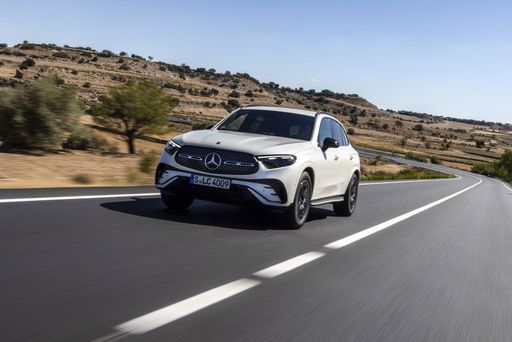 @ Mercedes-Benz Group Media
@ Mercedes-Benz Group Media
Mercedes GLC
Costs and Consumption
View detailed analysis
Engine and Performance
View detailed analysis
Dimensions and Body
View detailed analysis
Hyundai Santa Fe
The Hyundai Santa Fe blends practical family friendliness with a hint of premium style, offering roomy, sensible packaging wrapped in modern, confident design. Inside it serves up comfortable seats, straightforward tech and a calm, composed ride that makes daily drives feel a little more grown up — a solid all‑rounder that doesn’t try to be flashy.
details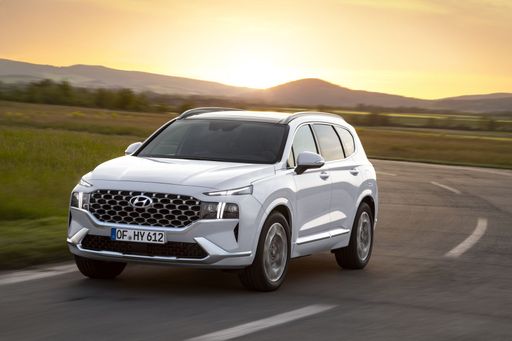 @ Hyundai Motor Company
@ Hyundai Motor Company
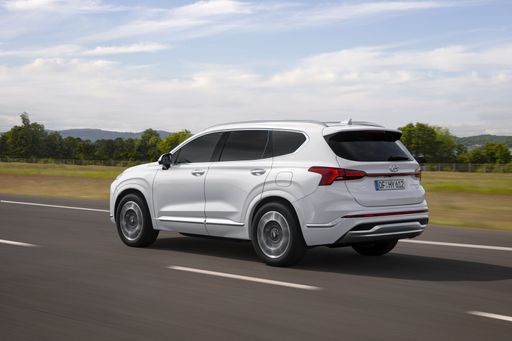 @ Hyundai Motor Company
@ Hyundai Motor Company
 @ Hyundai Motor Company
@ Hyundai Motor Company
 @ Hyundai Motor Company
@ Hyundai Motor Company
 @ Hyundai Motor Company
@ Hyundai Motor Company
Mercedes GLC
The Mercedes GLC blends plush cabin comfort and composed road manners into an SUV that feels more grown-up than it looks. It won’t shout for attention, but will quietly please buyers who want refinement, usable space and a touch of luxury without the drama.
details @ Mercedes-Benz Group Media
@ Mercedes-Benz Group Media
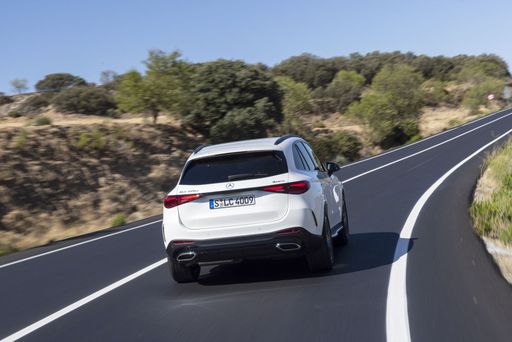 @ Mercedes-Benz Group Media
@ Mercedes-Benz Group Media
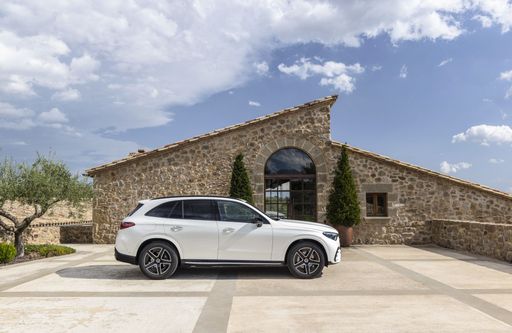 @ Mercedes-Benz Group Media
@ Mercedes-Benz Group Media
 @ Mercedes-Benz Group Media
@ Mercedes-Benz Group Media
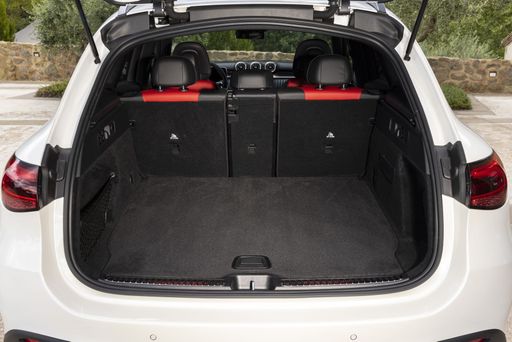 @ Mercedes-Benz Group Media
@ Mercedes-Benz Group Media
 @ Hyundai Motor Company
@ Hyundai Motor Company
|
 @ Mercedes-Benz Group Media
@ Mercedes-Benz Group Media
|
|
|
|
Costs and Consumption |
|
|---|---|
|
Price
51200 - 58400 £
|
Price
50300 - 126600 £
|
|
Consumption L/100km
1.7 - 7.1 L
|
Consumption L/100km
1.6 - 9.9 L
|
|
Consumption kWh/100km
-
|
Consumption kWh/100km
14.9 - 16.6 kWh
|
|
Electric Range
54 km
|
Electric Range
12 - 714 km
|
|
Battery Capacity
-
|
Battery Capacity
94 kWh
|
|
co2
38 - 160 g/km
|
co2
0 - 225 g/km
|
|
Fuel tank capacity
47 - 67 L
|
Fuel tank capacity
49 - 65 L
|
Dimensions and Body |
|
|---|---|
|
Body Type
SUV
|
Body Type
SUV
|
|
Seats
5 - 7
|
Seats
5
|
|
Doors
5
|
Doors
5
|
|
Curb weight
1920 - 2165 kg
|
Curb weight
1910 - 2535 kg
|
|
Trunk capacity
621 - 711 L
|
Trunk capacity
390 - 620 L
|
|
Length
4830 mm
|
Length
4716 - 4845 mm
|
|
Width
1900 mm
|
Width
1890 - 1913 mm
|
|
Height
1720 mm
|
Height
1603 - 1647 mm
|
|
Max trunk capacity
1942 - 2032 L
|
Max trunk capacity
1335 - 1740 L
|
|
Payload
560 - 665 kg
|
Payload
475 - 600 kg
|
Engine and Performance |
|
|---|---|
|
Engine Type
Plugin Hybrid, Full Hybrid
|
Engine Type
Petrol MHEV, Plugin Hybrid, Diesel MHEV, Electric
|
|
Transmission
Automatic
|
Transmission
Automatic
|
|
Transmission Detail
Automatic Gearbox
|
Transmission Detail
Automatic Gearbox, Reduction Gearbox
|
|
Drive Type
All-Wheel Drive, Front-Wheel Drive
|
Drive Type
All-Wheel Drive
|
|
Power HP
239 - 253 HP
|
Power HP
186 - 680 HP
|
|
Acceleration 0-100km/h
9 - 9.3 s
|
Acceleration 0-100km/h
3.5 - 9 s
|
|
Max Speed
180 - 196 km/h
|
Max Speed
208 - 275 km/h
|
|
Torque
367 - 380 Nm
|
Torque
320 - 1020 Nm
|
|
Number of Cylinders
4
|
Number of Cylinders
4 - 6
|
|
Power kW
176 - 186 kW
|
Power kW
137 - 500 kW
|
|
Engine capacity
1598 cm3
|
Engine capacity
1991 - 2989 cm3
|
General |
|
|---|---|
|
Model Year
2024 - 2025
|
Model Year
2025 - 2026
|
|
CO2 Efficiency Class
B, E, F
|
CO2 Efficiency Class
F, G, B, A
|
|
Brand
Hyundai
|
Brand
Mercedes-Benz
|
What drivetrain options does the Hyundai Santa Fe have?
Available configurations include All-Wheel Drive or Front-Wheel Drive.
The prices and data displayed are estimates based on German list prices and may vary by country. This information is not legally binding.
